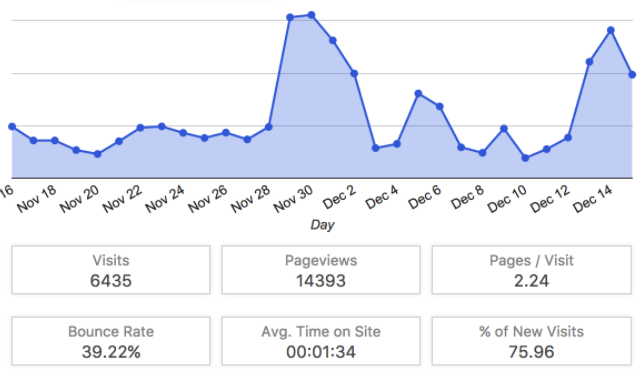With the unfortunate spread of Covid-19, people around the world are grappling with issues related…

How to Properly Implement a Business Blog
Post #2 of 3 in the series: The Importance of Blogging
As discussed in 3 Benefits of Blogging Every Business Should Know, blogging can be an effective and easy way to promote your business. In part two, of a 3 part series, we will discuss how to properly implement a business blog into your website and the benefits you can gain, such as connecting with customers or strengthening your brand. When implemented the right way, a blog can drive traffic to your website, increase your sales, establish you as an authority in your industry and help you to reach new markets. Below are 3 tips for building a successful business blog.
Establish Blog Goals
A blog, like your website, is not meant for you, it’s for customers to learn about your company and products, so writing content that is useful to them is the ideal methodology. When writing a blog post, you should aim to either solve a problem for your customers or provide fresh insights into your industry. Before incorporating a blog into your website, it is important to set goals, for example, increased traffic, shares, brand credibility etc. and determine how to track these KPI’s.
Ultimately, having goals, prior to implementing a blog, will help you be more productive and successful and help you recognize your successes. To determine your blogging goals, follow these 3 steps:
- Analyze your current marketing efforts to determine what garners interest.
- Determine the future goals of your company and how you want to position your brand.
- Evaluate the results and apply the analysis to your future goals.
Create a Content Calendar 
Lack of time and ideas are the most frequently cited reasons many businesses say they don’t blog. However, with a bit of planning, you can have enough ideas to keep a blog running for weeks or even months ahead. Creating a Content Calendar is an effective way to manage the content and frequency of your posts. Tools such as Google Trends, will help you determine what people are interested in or searching for. Gaining this insight will ensure that your content is relevant and also reinforces that your company is up to speed on current events. When contemplating how frequently you should publish a new blog post, there is no formula that works for every company, however following a routine tailored to your resources and customer needs will ensure success. Blogging shouldn’t be a chore, if posting daily isn’t working for you, it’s probably not working well for your readers either. Using Google Analytics will help you determine how well your blog is performing and provide insight into your optimal publishing frequency.
Choosing a Blogging Platform
 Finding the blogging platform that works for your business has become easy with the standardization of WordPress. Other platforms like Squarespace and Blogger also allow you to publish blog content, but WordPress remains our recommendation for the following reasons. The free version is quite powerful, allowing for easy theme customization and unlimited content control. There’s also a wide range of plugins that can quickly be applied to make your blog user friendly and optimized for search. If you ever run into plug-in issues, there’s a strong community of customer support. Finally, WordPress allows you to schedule future posts so you can stay on track with your content calendar.
Finding the blogging platform that works for your business has become easy with the standardization of WordPress. Other platforms like Squarespace and Blogger also allow you to publish blog content, but WordPress remains our recommendation for the following reasons. The free version is quite powerful, allowing for easy theme customization and unlimited content control. There’s also a wide range of plugins that can quickly be applied to make your blog user friendly and optimized for search. If you ever run into plug-in issues, there’s a strong community of customer support. Finally, WordPress allows you to schedule future posts so you can stay on track with your content calendar.
Whether convincing your executives to invest in a blog or contemplating the addition of a blog to your website, remember to determine your goals, decide on a blogging platform, and create a content calendar. In part 3 of this series, we will discuss the SEO benefits that come from blogging.



